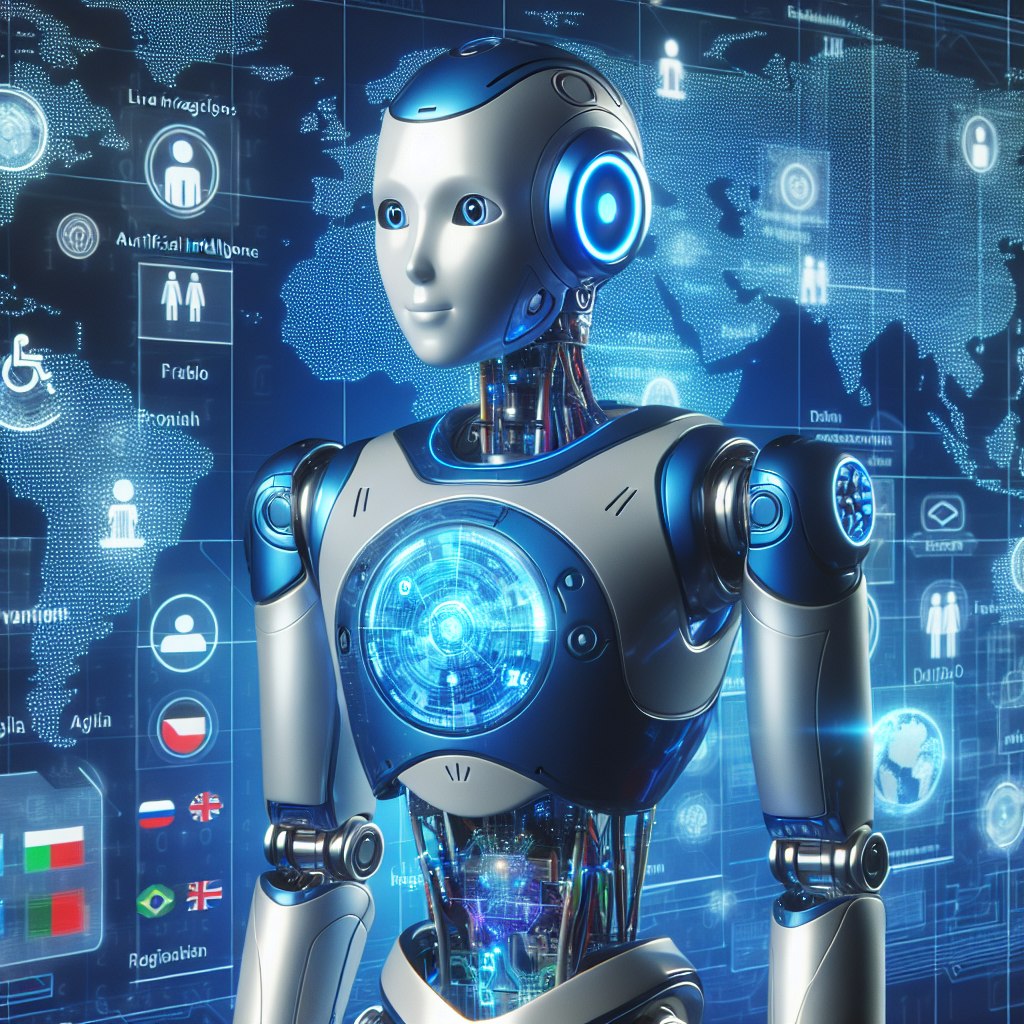The Future is Here: Nvidia’s ‘Blue’ AI Robot Revolutionizes Interaction
Introduction: The Era of Intelligent Machines
Artificial intelligence has been a topic of fascination for decades, promising to change the way we live, work, and communicate. Recently, Nvidia, a leader in AI and GPU technologies, made headlines by introducing its groundbreaking AI robot named ‘Blue.’ This robot isn’t just another piece of hardware; it represents a monumental leap in human-machine interaction. With live, real-time interaction capabilities, 'Blue' has captivated both tech enthusiasts and skeptics globally. Let’s dive deeper into this technological marvel and uncover how it may reshape our future.
Breaking Boundaries: What Makes 'Blue' Extraordinary?
1. Real-Time Interaction: A Game-Changer
When was the last time a robot truly impressed you with its lifelike capabilities? Nvidia’s ‘Blue’ stunned the world with its ability to respond and interact in real-time with humans. Unlike earlier robots that relied on pre-programmed responses, ‘Blue’ leverages Nvidia's state-of-the-art deep learning algorithms. This allows it to process complex verbal and non-verbal cues and produce meaningful, context-aware interactions.
For example, during a live demo, 'Blue' responded not just to spoken words but also to subtle facial gestures, creating an interaction that felt closer to human communication than ever before. Imagine how transformative this could be for industries like healthcare, customer support, and education.
2. The Core Technology Behind 'Blue'
The heart of 'Blue' lies in Nvidia’s advancements in AI frameworks like NVIDIA Omniverse™ Avatar Cloud Engine (ACE). Using billions of data points collected from various human behaviors, ACE enables the robot to predict and respond to situations with incredible precision. Combining this with real-time 3D graphics rendering and large language models (LLMs), 'Blue' doesn't just hear what you say—it understands why you’re saying it.
This meticulous design marks a paradigm shift in AI robotics. Nvidia’s cutting-edge GPUs, known for powering complex AI models, are the backbone of this development. It’s not just about a smarter robot—it’s about creating an immersive, collaborative AI experience.
Applications and Global Implications
1. Revolutionizing Healthcare
Imagine a scenario where ‘Blue’ assists surgeons during complex procedures or provides emotional support to patients. With its ability to comprehend emotional tones and respond empathetically, robots like ‘Blue’ might soon be indispensable in medical care, particularly in overburdened health systems.
2. Enhancing Education
‘Blue’ could become the ultimate teaching assistant, providing students with instant, personalized support. By analyzing each student’s unique needs in real-time, it could adapt its teaching style to optimize learning outcomes. From tutoring children in remote areas to assisting universities globally, the possibilities are endless.
3. Improving Accessibility
For individuals with disabilities, interactive AI robots like 'Blue' can serve as life-enhancing companions. Whether through assisting with daily tasks or providing companionship for those in isolation, Nvidia's innovation has the potential to make the world a more inclusive place.
4. Transforming Business
From virtual customer service assistants to managing intricate financial scenarios in real-time, the impact on business operations is immense. Large corporations are already eyeing Nvidia’s advancements as key drivers of the next industrial revolution.
Challenges: Is the World Ready for 'Blue'?
While Nvidia’s AI-backed marvel heralds immense potential, ethical concerns and technological challenges remain. People have raised legitimate questions about privacy, job displacement due to automation, and misuse of hyper-intelligent robots. Additionally, the development of such robotics requires vast computational resources, which some critics argue could lead to environmental concerns due to energy consumption.
Another pressing issue is trust—can humans rely on robots for tasks that require deep emotional understanding or critical decision-making? Nvidia must work on aligning AI technology with transparency and safety controls to ensure inclusivity and fair use.
Conclusion: Shaping a Smarter Tomorrow
Nvidia’s ‘Blue’ symbolizes the dawn of a new era, where the boundaries between humans and machines blur. It’s more than just a technological feat—it’s a testament to our collective ability to innovate. From healthcare to education, and even emotional support, the potential applications are limitless. Yet, with great power comes great responsibility. As we stand at the cusp of AI's transformation, it's up to us to guide creations like 'Blue' toward ethical and sustainable outcomes.
Keep an eye on this innovation—it’s not just a robot; it’s the future unfolding before our eyes.
Q&A: Curious About 'Blue'?
1. How does 'Blue' compare to previous AI robots?
‘Blue’ stands out due to its real-time interaction capabilities, backed by advanced deep learning and Nvidia’s powerful GPUs. Unlike traditional robots, ‘Blue’ adapts dynamically to both verbal and non-verbal cues.
2. What industries will benefit the most from 'Blue'?
Healthcare, education, customer support, and assistive living services are some of the immediate beneficiaries. However, its impact on technology and business operations is equally promising.
3. Are there any ethical concerns with 'Blue'?
As with any AI technology, concerns include issues around privacy, data security, potential job displacement, and unintended biases in AI decision-making. Nvidia is expected to tackle these challenges with stringent ethical standards.
4. Can individuals buy 'Blue'?
Currently, 'Blue' is showcased as a prototype, primarily aimed at enterprise-level applications. It may take a few years for such robots to be widely available for personal use.
5. Will robots like 'Blue' take over human jobs?
While automation often raises concerns about job displacement, AI robots like 'Blue' are designed to complement human skills, not replace them. They are likely to handle repetitive tasks, freeing humans for more creative and strategic roles.
Related Tags
#AIInnovation #NvidiaBlue #RoboticsTechnology #ArtificialIntelligence #FutureOfWork #SmartInteraction #TechRevolution
Meta Description: Discover Nvidia’s ‘Blue,’ a cutting-edge AI robot redefining real-time interaction and transforming industries like healthcare, education, and business. Explore its potential and challenges here!
